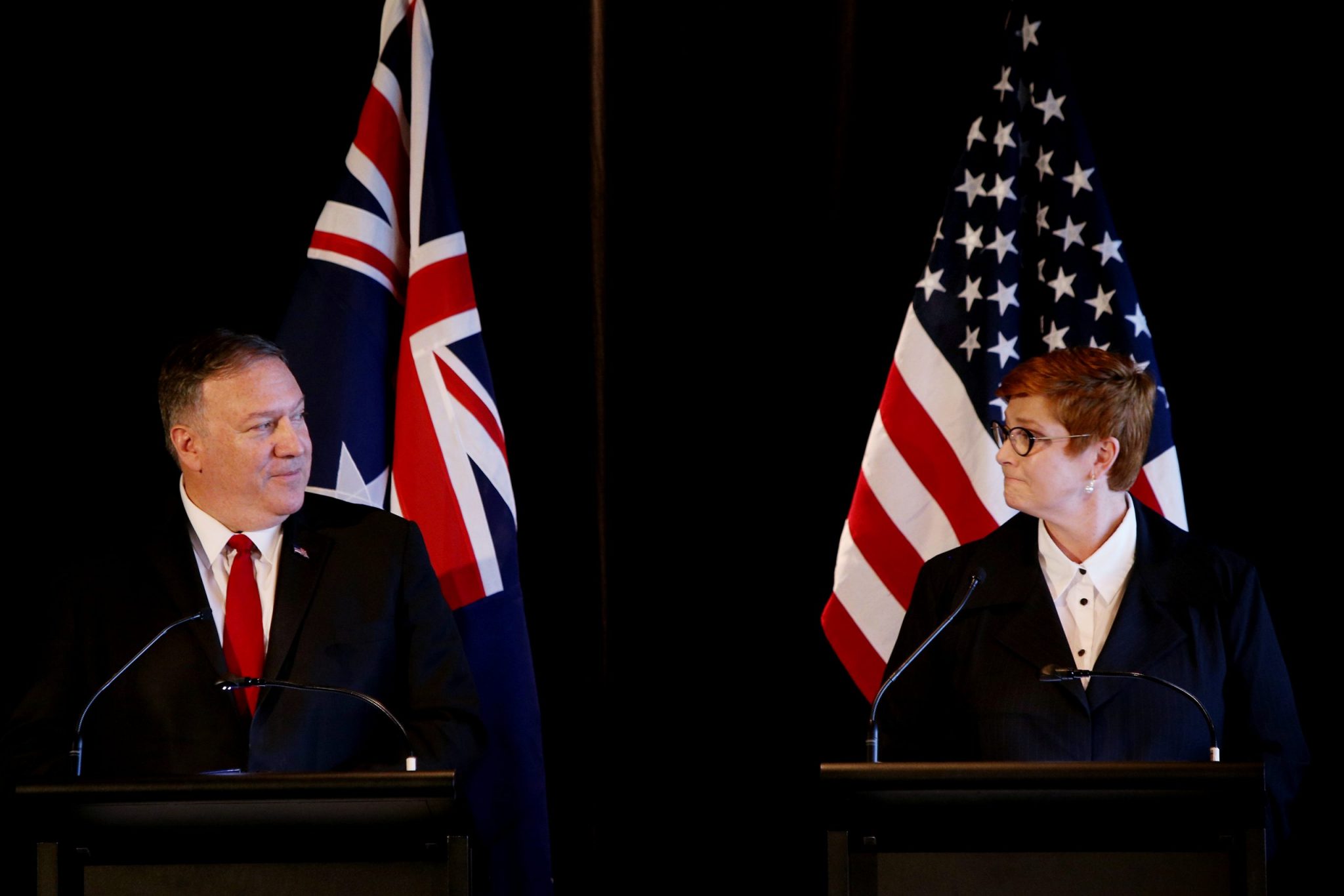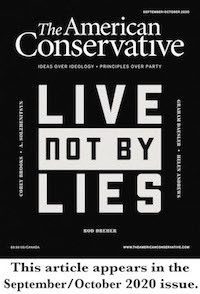Our Allies Will Help With China—On Their Own Terms

On July 23, in the midst of the worst pandemic since the Spanish flu ravaged the United States in 1918, Mike Pompeo appeared at the Richard Nixon Presidential Library and Museum in Yorba Linda, California, to give his most important foreign policy speech as secretary of state. Standing in the bright California sun in front of Nixon’s boyhood home, Pompeo didn’t disappoint. While praising Nixon’s foreign policy prowess, and particularly his 1972 opening to China, Pompeo issued an increasingly popular cautionary note, while explicitly criticizing the failure of Nixon’s China policy: “The kind of engagement we have been pursuing has not brought the kind of change inside of China that President Nixon had hoped to induce,” he intoned. “The truth is that our policies—and those of other free nations—resurrected China’s failing economy, only to see Beijing bite the international hands that were feeding it.”
Put simply, Pompeo praised Nixon for forging the opening to China, but then criticized the United States for overseeing the rise of a nation wedded to oppressing its own people—and challenging American power. The United States had created a monster. In the years since Nixon’s opening, Pompeo argued, China had exploited “our free and open society,” sent “propagandists into our press conferences,” marginalized Taiwan, “ripped off our prized intellectual property and trade secrets,” sucked “supply chains away from America” and “made the world’s key waterways less safe for international commerce.” The Pompeo charge sheet charted an impressive litany of Trump administration complaints—the most damning being China’s “decades-long desire for global hegemony.”
Pompeo’s speech was weeks in the making and garnered widespread attention—particularly among Washington’s foreign policy elites. Among the most respected of them was Richard Haass, the estimable head of the Council on Foreign Relations. Pompeo, Haass wrote in the pages of The Washington Post two days after the secretary of state’s address, “sought to commit the United States to a path that is bound to fail. It is not within our power to determine China’s future, much less transform it.” The U.S., Haass went on to argue, “should be working with countries of the region to produce a collective front against Chinese claims and actions in the South China Sea; instead, it took three-and-a-half years for the State Department to produce a tougher but still unilateral U.S. policy.”
While neither Pompeo nor the State Department responded to Haass’s article (it would have been unusual if they had), they might have pointed out that the secretary of state’s Nixon Library speech preceded by days a visit from Australia’s top foreign policy officials to Washington as part of the yearly “Ausmin” ministerial consultations—during which Pompeo and his fellow West Point graduate, Defense Secretary Mark Esper, would challenge America’s erstwhile South Pacific ally to join them in confronting China in the region. Pompeo had even coined a name for this campaign, telling his Yorba Linda audience that the U.S. would take the lead in recruiting a group of like-minded nations, which he dubbed an “alliance of democracies.” The meetings, within days of Pompeo’s offering, seemed to imply that Australia would be the U.S.-led “alliance of democracies’” first member.
And so it was that, four days after Pompeo’s address (and two days after Haass published his critique), Esper (the administration’s reputed most senior China expert) welcomed Australian Defense Minister Linda Reynolds at the Pentagon, while Pompeo hosted Australian Foreign Minister Marise Payne in a series of high-level talks at Foggy Bottom. The U.S. rolled out the red carpet for their Australian defense and foreign policy counterparts—complete with a Pentagon color guard, closely coordinated exchanges on issues ranging from public health to intelligence sharing, a high profile State Department dinner, and a carefully choreographed press briefing in which Pompeo was effusive in his praise of the “lively and productive set of conversations” that he and Esper had had with their Australian counterparts.
In all, or so Pompeo and Esper would have the Washington press corps believe, the talks were both substantive and productive—with the U.S. and Australia seeing eye-to-eye on a host of issues, not least of which was the desire of both governments to respond forcefully to what Pompeo described, just days earlier, as China’s “new tyranny.” In fact, however, Pompeo and Esper’s squiring of two of Australia’s most important foreign policy officials not only did not go as well as either had hoped, but was preceded by what one Pentagon official described as Pompeo and Esper’s joint realization that it would be nearly impossible to argue Canberra out of what this Pentagon official described as “Australia’s three no’s”: no to a permanent presence of U.S. troops on Australian soil, no to America’s oft-asserted desire for the construction of a large U.S. naval base on Australia’s western shore, and no to the U.S. plan to position intermediate range nuclear missiles in Australia as a counter to China’s nuclear ambitions.
All of this was entirely predictable. America first mooted the idea of building a large naval base in Australia in 2011, in the midst of Barack Obama’s “pivot to Asia”—what was then perceived as a bells and whistles strategic shift in U.S. military priorities away from the Middle East and the war on terror—and towards a new engagement with Asia. But while the Obama program was touted as a reorienting of American defense and foreign policy priorities, America’s Asia allies, including Australia, were lukewarm, preferring a strategy of engagement with China that included deepening economic, social, and cultural ties, support for the Obama-negotiated Trans-Pacific Partnership (the TPP, which the Trump administration nixed), and the strengthening of cooperative relations through the Association of Southeast Asian Nations—ASEAN.
Additionally, Australian officials have made it clear in recent years that, while U.S. troops are welcome in Australia for training purposes, or as part of joint U.S.-Australian war games, a more permanent presence of U.S. troops in their country is out of the question. The Australians have even made it clear that they remain uncomfortable with 2,500 U.S. Marines stationed near Darwin (on a strictly rotational basis), lest the American presence grow. The same is true for America’s desire to build a sprawling naval base in western Australia, a necessity if the U.S. Navy is to project its reach not only northwards into the South China Sea, but westwards into the Indian Ocean. A 2011 paper on the subject, written by Naval War College thinkers James Holmes and Toshi Yoshihara, landed like a thud with Australian officials, who said that they would agree to the proposition of U.S. military supplies in their country, but nothing more. When Holmes reupped the idea in the pages of The National Interest, last November, Australia’s answer was the same. “Australians pride themselves on their reputation as a dependable ally on the battlefield,” as one Australian official noted recently. “But they are more reluctant to yield up slices of their plentiful territory for foreign military use.” It’s also clear that the American idea of positioning ground-launched, intermediate range missiles in Australia—or anywhere else in Asia—is a non-starter in Canberra, which views the U.S. withdrawal from the Intermediate Nuclear Forces (INF) agreement in August of last year as unwise. The diplomatic equivalent of a cold silence greeted Esper when he mentioned the possibility in a trip to Australia last year, and the chance of doing so now is so remote that it’s not even clear that it was discussed with Australian officials during their Washington visit.
Indeed, as the senior Pentagon official with whom I spoke said in the wake of the Pompeo-Esper meetings in July, U.S. foreign policy experts “are in dire need of sensitivity training on Australia’s long history of serving as a catspaw in big power conflicts.” As a former British colony, Australia was ill-served by a succession of British prime ministers, who used Australian troops as cannon fodder during the Boer War when two of its soldiers (Peter Handcock and Australian poet Harry “Breaker” Morant), were executed by British authorities, and then in World War I, when nearly 9,000 Australians died during the ill-fated Gallipoli campaign. Australians were also rubbed raw by the loss of 15,000 of their soldiers taken prisoner at Singapore after the British had transferred them there, and by what they viewed as their needless sacrifices during the final days of World War II, when the U.S. insisted that Australian troops participate in a series of needless military offensives against Japanese troops bypassed by the Americans on islands in the South Pacific. The result of all of this is that the Australians have proven to be less willing to shape a follow-the-leader foreign policy than at any point in their history—that, for the politicians of Canberra, it is “Australia first.”
In reading between the lines, that became clear in the final press conference featuring Pompeo and Esper with their Australian counterparts on July 26. While the press conference was held to great fanfare at Foggy Bottom, the official communique of the U.S.-Australian meeting was decidedly tipped in Australia’s favor—where Australian talking points took the lead. The lead issue of the joint communique was not China, but fighting the coronavirus, followed by a commitment to the strengthening of “our networked structure of alliance and partnerships,” maintaining a bilateral commitment to “women’s security,” economic empowerment, and recognizing the importance of the Pacific Islands Forum—all Canberra’s foreign policy priorities. The U.S.-Australia response to China then followed, but in terms that seemed dictated by Australia, not the U.S.: with a focus on human rights, Hong Kong, and maintaining ties to Taiwan. Nowhere was there any mention of Australia’s agreement to a permanent presence of U.S. troops on Australian soil, the building of a U.S. naval base on Australia’s western shore, or the positioning of intermediate range missiles in Asia.
rights, Hong Kong, and maintaining ties to Taiwan. Nowhere was there any mention of Australia’s agreement to a permanent presence of U.S. troops on Australian soil, the building of a U.S. naval base on Australia’s western shore, or the positioning of intermediate range missiles in Asia.
While both Pompeo and Esper later hailed the U.S.-Australian meetings as a resounding success, in any other time and in any other administration, the conference would have been adjudged for what it was—an embarrassing failure. Worse yet, Pompeo’s Nixon Library walk-up would have been seen for what it was: a stillborn attempt to birth an American-led “alliance of democracies” focused on confronting China militarily. The message from “down under” is unmistakable: Canberra will continue to partner with the U.S. in building a more secure environment in the Southwest Pacific, but Canberra is not interested in transforming their region into a theatre of conflict. So while Americans are quick to applaud the Trump administration’s “America First” agenda, Pompeo and Esper’s meeting with their Australian counterparts show that two can play at that game—reinforcing what is now becoming all too apparent in the age of Trump: that America’s allies are willing to help the U.S., but only on their own terms.
Mark Perry is a journalist, author, and contributing editor at The American Conservative. His latest book is The Pentagon’s Wars.
Comments